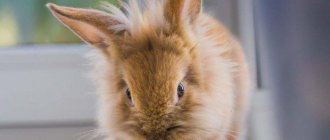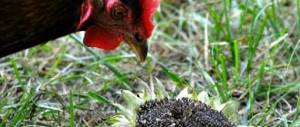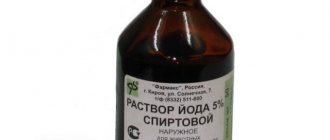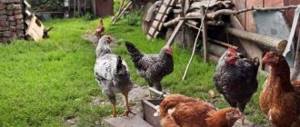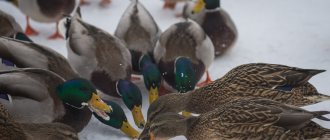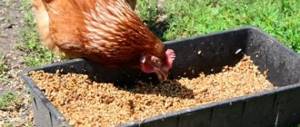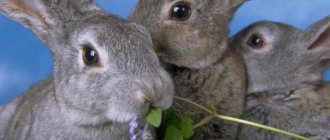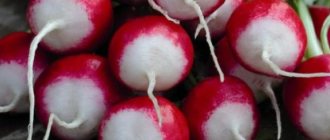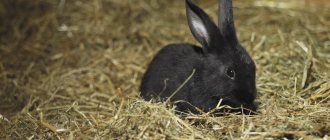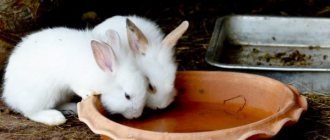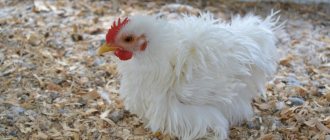What leaves can be given to rabbits?
Let's start with an approximate list of plant leaves that are suitable for food:
- nettle;
- raspberries;
- grape;
- strawberry;
- Apple tree;
- poplar;
- elm;
- maple;
- Rowan;
- acacia;
- ash;
- birch.
This list can also be supplemented with leaves of chicory, wormwood, mustard, lettuce, Chinese cabbage, and sunflower. Plus vegetable tops: carrot, beet, pumpkin, radish and celery. They are perfectly digestible and have high nutritional value.
The most useful leaves
It is generally accepted that rabbits receive the greatest benefit from consuming acacia and elm leaves. They contain many essential microelements, vitamins, amino acids, and protein. The next most important are maple, ash and poplar.
Nettle is the first spring vitamin for rabbits. It is usually mixed with the main feed. For example, finely chopped, steamed together with bran or mixed with crushed boiled potatoes and given to animals in this form.
Raspberry and strawberry leaves also help fight vitamin deficiencies after winter, then they are adequately replaced by grape leaves.
Consumption restrictions
You can also give birch leaves to rabbits, but in dosage. Don't forget about the diuretic effect of birch branches and leaves; they can negatively affect the functioning of your pet's kidneys.
There are often debates around lettuce leaves: is it possible to give lettuce leaves to rabbits, is it dangerous? Lettuce leaves are undoubtedly beneficial. They contain potassium, magnesium, folic acid, phosphorus, etc., this is an excellent tool for strengthening the immune system and preventing obesity. But if you overfeed a rabbit with lettuce, you can cause severe poisoning. All because of alkaloids, which are present in the plant in small quantities and, when accumulated, are harmful to health.
You also need to be careful with radish tops, eating which in large quantities is unsafe for the digestive system.
Plant medicines
Oak and alder are not suitable for constant consumption, but they are excellent medicine. Due to the presence of tannins, the leaves of these trees affect intestinal motility and eliminate diarrhea. If you overfeed a rabbit with them, they will cause severe constipation. It’s the same story with willow leaves - they have bactericidal properties and are excellent at fighting various infections, but they are not suitable for regular feeding.
The leaves of plantain, yarrow, sea buckthorn and walnut are components of the “first aid kit” for the eared ear. They have a general strengthening effect on the body and are quite suitable for storing for the winter. It is not recommended to give them daily as the main food.
Occasionally, to prevent diseases, rabbits are given horseradish leaves.
In winter, coniferous trees are a great help. Due to the lack of other greens, they are almost the only natural source of vitamins.
Which leaves are contraindicated for rabbits?
Not all leaves can be given to rabbits. Many of them are poisonous and can cause serious poisoning in animals. Under no circumstances should rabbits be given elderberry, bird cherry, buckthorn, wolf bast or wolf berries, or lilac. It is not recommended to feed tomato tops and leaves to animals. Although potato tops, which belong to the same nightshade family as tomato tops, are allowed to be given in small quantities. If you don't want to take risks, then don't do this.
Controversy surrounds stone fruit trees such as plum, apricot, peach, sweet cherry, and cherry. It is generally accepted that the bark and foliage of these trees contain hydrocyanic acid, which is poisonous to animals. But many livestock breeders claim that this is not true; hydrocyanic acid is only found in fruit seeds.
In any case, it is better to be careful and limit yourself to leaves from truly safe trees. Radishes are not very suitable for rabbits. If the root can be given without fear. The tops can cause digestive disorders in them.
What leaves should rabbits not eat?
Tree leaves
The leaves of some trees pose a great danger to the health and life of rabbits, since even in small quantities they act as poison. These include:
- lilac;
- bird cherry;
- wolf's bast;
- elder;
- buckthorn;
- apricot;
- plum;
- peach;
- cherry;
- cherries.
The seeds of the fruits of the last five trees contain poisonous hydrocyanic acid and cyanides, which can turn into a nerve poison. Therefore, it is believed that the bark with leaves may also contain a small percentage of this substance. It’s not worth risking the animal’s health, because there are plenty of other, safer trees and plants around.
Leaves of herbs, flowers, vegetables
A unanimous opinion has been formed regarding tomato tops - they should not be given to the big-eared animals as food. The attitude towards potato tops is not so categorical. But potatoes are a nightshade family, just like tomatoes, so not all rabbit breeders approve of this choice. Rhubarb and indoor plants are also not the best option for feeding rabbits.
Not all leaves are created equal
Leaves of white and red cabbage can be found in your fluffy's feeder, but they cause increased gas formation, fermentation, etc. For this reason, it is better to classify it as a prohibited product.
Leaves of celandine, belladonna, dope, and buttercup pose a mortal danger to long-eared pets. You should be extremely careful when collecting plants for animals.
Contraindications for rodents
For more tasty complementary foods, rabbit breeders experiment with greens and add branches, which, although tasty, are not very healthy for rabbits. Toxic substances cause symptoms of poisoning in rodents; the weakest rabbits may even die. Under no circumstances should elderberries, bird cherry or buckthorn be placed in the feeder of furry animals. Wolf berries and lilacs are poisonous to adult rodents and young animals.
Stone fruit trees can also cause disease in weak rabbits. The rodent's body does not accept radish greens well, but root vegetables will only benefit the animals. Side effects from taking greens include digestive upset and diarrhea.
Nuts are a storehouse of vitamins and minerals, a tasty and healthy product containing vegetable protein and polyunsaturated fatty acids, on which the smooth functioning of human internal organs depends. A rabbit is a herbivore, so its diet must contain foods that will supply it with proteins and fats. Can pets eat nuts?
When composing your pet’s diet, you should remember that the basis of rabbit nutrition is grass and grains. Fatty foods are strictly prohibited for them, as they have a strong effect on the liver. For this reason, it is advisable that nuts do not appear in rabbits’ feeders; in extreme cases, they can be offered to the animal, but very rarely, and this only applies to walnuts. Almonds, due to the fact that they can cause severe allergies or poisoning, are strictly forbidden for rabbits to eat. The ban also applies to nutmeg, which can cause vomiting, nausea, and problems with the gallbladder and cardiovascular system in rabbits.
It is very important to ensure that animals do not have nuts in their diet or that they appear extremely rarely. Due to excess fat content, they can cause dysbiosis, which in rabbits requires serious treatment, or disrupt metabolism, one of the negative consequences of which is obesity.
The most interesting news:
Can a dog have sunflower oil?
The diet of a beloved pet, like a person’s, should be balanced and rich in all...
Can cats have chocolate?
Quite a few cats don't mind eating chocolate. Because for people, chocolate is one of...
Nutritional Features
Under natural conditions, rabbits eat plant foods, and their diet consists of green food (grasses, wild and cultivated cereals), root crops, branches and bark of trees, as well as underground parts of plants.
The menu of pets depends entirely on the person, so rabbit breeders should be very careful when preparing their diet.
From plant foods they receive the bulk of the vitamins and minerals necessary for normal digestion and general functioning.
The nutrition system should include: succulent, roughage and concentrated feed. At the same time, juicy ones occupy no more than 1/3 of the entire daily diet. Chalk, salt and vitamin stone are used in small quantities in the diet as mineral supplements to food.
In summer, young leaves of trees and shrubs can be added to the main diet of rabbits, and in winter, fresh shoots of conifers.
The presence of cake, meal, bran, fish and meat and bone meal is important for a balanced diet.
The main diet consists of:
- Seine.
- Compound feed.
- Water.
Hay and feed should always be in the animal's feeder, because the rabbit's stomach has weak muscles and should be filled with food and water as often as possible.
Without the pressure of new food coming in, food already in the stomach will not move into the small intestine. That's why they eat so often.
Feed pellets and water also help improve the functioning of the digestive system.
Additional diet
- Wild herbs (plantain, nettle, dandelion, burdock, shepherd's purse, rapeseed, chamomile, alfalfa, mouse pea, yarrow, fireweed, chicory, wheatgrass, chickweed, clover, etc.).
When harvesting (cutting, drying, wilting) herbs and preparing a herbal mixture, you should be careful not to get dangerous plants (quinoa, nightshade, celandine, hemlock, dope, horse sorrel, etc.) into the feed, as well as plants containing essential oils (parsley, dill and etc.).
- Wormwood and tansy can be present in the diet of animals, but their quantity should be limited. Different types of herbs can be alternated when feeding or made into a green collection.
- Vegetables (white cabbage, rhubarb, potatoes, carrots, cucumbers, zucchini, tomatoes). You can also give rabbits lettuce leaves, beet tops, as well as turnip tops, Jerusalem artichoke, radishes and carrots.
- Melons (pumpkin, melon, watermelon).
- Cereals (corn, barley, wheat, oats).
- Legumes (soybeans, lentils). It is advisable to introduce legumes into the diet gradually so as not to provoke intestinal disorders. The ideal combination is a mixture of legumes and cereals.
- Fruits and dried fruits (apples, pears), except exotic and stone fruits (plum, apricot, etc.). In this case, the core of the fruit containing small seeds must be removed from apples and pears.
- Leaves and shoots of trees and garden shrubs.
Leaves and branches in the diet
Rabbits eat leaves from different trees
As a rule, twigs of linden, aspen, acacia, willow, apple or pear are placed in the feeder of domestic rabbits. Animals need this to grind down their front teeth (incisors).
Also, twig food is a real natural storehouse of nutrients, vitamins and microelements.
Let's look at which tree leaves can be given to rabbits.
Currants
Currants are an excellent branch food for rabbits. The shoots along with the leaves help diversify the daily diet, as they can be given in any quantity.
Ripe currants make a good dessert.
Raspberries
Rabbits are very fond of the green leaves, shoots and even prickly trunks of raspberries.
In addition, they are very useful - they cause a good appetite, promote health and the immune system.
Of course, they like raspberries most of all, but they should only be offered to pets as a treat.
Important! Any parts of this subshrub can be given as food, except for the root system.
Strawberries
The green part of the plant (shoots, leaves and tendrils) of strawberries contains iron, zinc, calcium, potassium and ascorbic acid and is a useful dietary supplement for the daily diet.
But you should be careful with juicy berries and offer them to rabbits in extremely limited quantities.
Olga Nevolina (Veterinarian):
It should be borne in mind that most gardening crops are treated against various parasites in the spring. Therefore, the leaves and twigs used in the diet of rabbits must first be washed and slightly dried.
Maple
Of all publicly available trees, maple leaves have the highest content of fructose, sucrose and glucose. Therefore, they may well serve as the main supplier of sugar.
Is it possible to give a decorative rabbit nuts?
Contents hide
Nuts contain a large amount of fat, which is harmful for herbivores, which are rabbits. But many eared animals love to eat this product. Let's figure out whether it is possible to give nuts to a decorative rabbit and in what quantities?
Nuts are saturated with fats and proteins (the amount of protein in nuts can compete with meat). Excess calories can disrupt metabolism, lead to obesity, liver and digestive problems. And some nuts, such as nutmeg, hazelnuts, and peanuts, can cause severe poisoning, nausea, vomiting, and allergies. They should absolutely not be given to a rabbit.
But sometimes you can still pamper your pet with a nut. Rabbits are allowed only one type of nut – walnuts. And in very small quantities.
Who can have a walnut? Walnut contains a huge amount of vitamins and microelements that a young rabbit needs. Among them, for example, is calcium, which is needed for bone growth. Potassium, phosphorus, and magnesium are very important for the development of a young organism. The iodine contained in the nut prevents a common and very dangerous disease among rabbits - coccidiosis. Thanks to a large amount of vitamins E, A, C, as well as B vitamins, walnuts will replace the complex vitamin supplements and supplements that babies need.
In limited quantities, walnuts can also be given to a nursing rabbit: the milk becomes richer and more nutritious. In addition, she needs to replenish the calcium and other trace elements that she loses daily due to feeding. Walnuts are also useful for an adult rabbit after a serious or prolonged illness to restore vitality.
For healthy adult pets, it is better not to give nuts at all or very rarely as a treat or reward.
How to give walnuts? Rabbits can be given half a nucleolus per day every three days. For adult rabbits after illness - one nucleolus per day, every day for 7-10 days, depending on the course and duration of the disease. Lactating females - 1 nucleolus daily during lactation.
walnut leaves and branches with caution . Remember that not all leaves are good for your rabbit! Some of them are even poisonous. Walnut leaves have restorative properties and have a disinfecting and antibacterial effect. Under no circumstances should you feed them on a regular basis. True, the rabbits themselves eat walnut leaves without much desire.
Photo:
What not to give to rabbits
Tomato stems and leaves left over after harvest.
Unlike the healthy and nutritious fruits of tomatoes, which can be fed to rabbits, the green parts of this plant should absolutely not be included in the menu of fluffy animals.
Tomato greens contain the dangerous alkaloid solanine, which affects the nervous and digestive systems of the animal as a powerful toxic substance.
Empty sunflower baskets after collecting seeds. Unlike sunflower seeds, which have high fat content and nutritional value, baskets will not add anything useful to your pet’s diet. And the seeds themselves should be on the menu only as a very rare delicacy.
Potato tops are also prohibited for feeding to rabbits. It contains solanine, which if eaten can lead to the death of your pet.
But by-products of sunflower processing - meal and cake - are an indispensable high-protein supplement to the diet of domestic rabbits, capable of speeding up metabolism and strengthening the immune system.
Is it possible to give rabbits nuts?
Nuts are a very valuable product that contains a storehouse of vitamins and nutrients. Among them are vegetable protein and polyunsaturated fatty acids, which ensure the smooth functioning of internal organs. At first glance, the product is healthy for everyone, but is it possible to give nuts to rabbits?!
Despite all the usefulness of this product, it has a harmful effect on the animal’s liver and is very difficult for digestion. In addition, hazelnuts, peanuts and nutmeg are poisonous and can cause severe poisoning, allergic reactions, vomiting, nausea, heart and gall bladder problems. These foods should never go into the feeder. There is no point in risking the life and health of your little ears. In addition, fatty foods are prohibited for rabbits.
Walnuts can also cause serious harm to health. But among all others, it can be called the least evil. It is also not recommended to give it, but if somehow 1 gram gets into the feeder, it will not cause serious problems.
I sometimes use walnut leaves for medicinal purposes, as they have general strengthening properties. No less useful in the diet are yarrow, plantain and sea buckthorn leaves.
Make sure that nuts do not appear in your diet at all. In addition to all of the above, large amounts of fat lead to rapid obesity. They are most harmful during pregnancy and reproduction, as they significantly reduce the chances of impregnating the rabbit.
Is it possible to feed rabbits walnuts and in what quantities?
Nuts are a nutritious product that is a source of saturated fat, vegetable protein, vitamins and other useful substances. They are used in human nutrition, but rabbit breeders are primarily interested in the question of whether it is possible to give rabbits nuts (walnuts, peanuts, etc.) and in what quantities.
Nuts contain a lot of fat, and since rabbits are herbivores, they do not need a lot of fat. In addition, an excess of these substances leads to obesity and negatively affects the liver, so it is impossible to give nuts often, much less feed them to animals every day. This applies to all rabbits, that is, those belonging to the usual meat and downy breeds, decorative and dwarf. From such rich food they quickly become fat, even the young ones; males are reluctant to mate, and females are poorly fertilized.
As a last resort, the fruits can be used, but only occasionally and literally one at a time. But this applies only to walnuts; it is not advisable to feed other types of walnuts (almonds, nutmeg, peanuts, hazelnuts).
We recommend reading
Is it possible to feed rabbits potatoes, in what quantities?
Is it possible to give nettle to rabbits, in what quantities?
Is it possible to give Jerusalem artichoke to rabbits, in what quantities?
Is it possible to give apples to rabbits, in what quantities?
Walnuts contain a lot of calcium, which is needed for bone growth, vitamin E and iodine, which prevents the development of coccidiosis. Its fruits have a powerful anti-inflammatory and tissue-restoring effect.
They are given to female rabbits immediately after giving birth to restore the body and increase the nutritional value and volume of milk, and to animals to recover from illness. Babies who drink this milk grow faster and are larger than their peers from other births.
You can treat other animals, including young animals, with walnuts. For young animals, ½ nucleolus every 3 days is enough, for lactating females - a maximum of 1 piece. per day, for females during the rest period, half a nucleolus every 3-4 days.
Rabbits are reluctant to eat walnut leaves, fresh or fallen, since they are not included in the list of “favorite greens.”
What else to read:
Is it possible to give beet tops to rabbits and the beets themselves, which ones and in what quantities?
Is it possible to give barley to rabbits and in what quantities?
Why wormwood is beneficial for rabbits, feeding rules and norms
Is it possible to feed parsley and dill from the garden to rabbits: feeding standards
Types of food for domestic rabbits
Before figuring out what exactly can be given to rabbits, you need to figure out what main groups the components of their diet are divided into. At the same time, you need to understand that you cannot get by with just one type of food, no matter how healthy it may be considered. You should always make up your diet from several different components. And the farmer may have to periodically change the composition of the portions. This has to be done in cases where animals require certain vitamins that are only available in certain foods.
Don’t forget about the seasonal change in diet for the rabbit population. For example, rabbits can (and should be) given green and succulent food. But in winter, fresh grass is not available, and it has to be replaced with high-quality silage. Therefore, it is also recommended to learn how to silage, because you won’t be able to get by with hay alone. There are several options for both winter and summer feeding. But first, it’s worth considering all the types of feed that are usually used for fattening rabbits:
- Grass and other similar green food. We should never forget that wild rabbits are grassland animals. And for normal life, they need meadow and field grasses, as well as the tops of cultivated plants. For example, you can give rabbits mouse peas, coltsfoot, hogweed, clover or plantain. They should also be fed with alfalfa, wormwood or nettle, but in some cases.
- Juicy food - do not confuse it with green mass. This includes a range of root vegetables and vegetables. It is worth considering that, contrary to popular belief, white cabbage is not always beneficial for these animals. If they feel sick from cabbage stalks, it is better to remove them from the diet. Of the root crops, it is worth noting carrots, fodder beets and Jerusalem artichoke.
- Don't forget about roughage. They will not form the basis of the diet, but without them the rabbits will not feel too good. This type of food includes straw, hay made from the tops of legumes or cereals, tree branches, leaves and pine needles. All this is necessary in order to grind down the animals’ teeth and ensure normal digestion.
- Compound feed and various grains. These are sometimes called concentrated feeds due to their high nutrient content. A large amount of such food will not benefit the ears, but it is worth using to speed up fattening. It should be borne in mind that the use of such feed increases maintenance costs.
- Various food additives and table waste. Food waste should be used with caution, because if it begins to rot or mold, it will become a dangerous poison. The same applies to the inclusion of foods unsuitable for rabbits in the diet. As for vitamins and minerals, they are given to animals as needed.
This is all a general division that some farmers sometimes disagree with. For example, silage can be classified as both green and succulent feed, depending on its composition and processing. Many more separate vegetables and fruits as rabbit food, although the animals are usually given something that cannot be used by the owner of the plot. Therefore, sometimes it is possible with
Juicy and nutritious food for rabbits
These feeds cannot form the basis of the animal’s diet, but they must be included in it. Vegetables, fruits, roots and the fruits of some wild plants are usually used as such food. If we talk about root vegetables, then eared animals can be fed with beets (beetroot is perfect for them), turnips, garlic, and given radishes and carrots. But neither beetroot nor other root vegetables can compare with Jerusalem artichoke. This root vegetable is like a kind of ambrosia for rabbits. Just remember that this is an invasive plant.
Among vegetables, these animals will like spinach, broccoli, corn cobs (can be given whole), zucchini and squash. It is also worth giving celery (both greens and root vegetables), pea pods and tops, garden rhubarb, lettuce, phacelia and many other garden plants. Eared pets do not have the best health, but they are practically omnivorous in terms of cultivated plants. But still, you shouldn’t give them nightshade crops. Potatoes can be boiled, but it is better not to use any such tops at all.
Fruits and berries for rabbits
With fruits and berries the situation is exactly the same as with vegetables. You can give the animals currants, viburnum, sea buckthorn, blueberries, rowan, and other similar berries. And as fruits, quinces, cherries, apples, pears, plums and even peaches are added to the food. Some aesthetes feed their pets nectarine, pineapple, persimmon, orange, as well as the peel of these fruits. But the fruits themselves, and orange and banana skins, are not always useful for animals. And it is better to give them, like other fruits, in very limited quantities.
Interestingly, the long-eared inhabitants of rabbit hutches happily gobble up acorns and chestnuts, both fresh and dried. You can diversify your diet with these fruits in the summer, or prepare them for use in the winter. When harvesting in winter, acorns and chestnuts must be dried, finely crushed and then pressed into briquettes. Or it can be stored as flour in bags. It is better not to give such food to small rabbits in the first month of life. But adult animals can eat them in small portions every day.
Exotic fruits and vegetables for rabbits
Owners of ornamental animals were the first to become interested in unusual and expensive food. Then some farmers picked up this same hobby, deciding that such products improve the quality of meat and fur. But this, unfortunately, is not true. For example, you can give animals pomegranate, kiwi, citrus fruits and their waste (tangerine peel), dates or raisins. This group also includes peanuts, dried fruits (many give dried apricots) and various nuts. These products do not cause harm, but there is not much benefit from them either.
The main disadvantage of using such feeds is their high cost. Even raspberries or strawberries should not be fed to animals, just like feeding them apricots or peaches. After all, all these fruits are not so cheap, and feeding them to animals is wasteful. A number of livestock breeders claim that such feeding improves the quality of meat. But they will never increase its price, except in isolated, rare cases. Here is what experienced rabbit breeders who have been breeding these animals for a long time write about this on the forums:
“Some beginners ask in all seriousness whether it is possible to feed rabbits citrus fruits, various fruits and berries from the garden. Or maybe they should be fed dried fruits (dried apricots or prunes) and nuts. And they motivate this by the fact that such a diet improves the quality of meat. Alas, this is a very controversial issue even when it concerns adult healthy animals. And if it is given to a pregnant rabbit, or gets into the food of baby rabbits, it can cause considerable harm. Therefore, raisins, peanuts or pineapples should be left to the people.”
Roughage in the diet of domestic rabbits
Unlike fruits and berries, roughage must be included in the portions prepared for the ears. They cannot form the basis of the diet, but without them the animals will feel much worse. Rough, hard food is good for digestion, allows you to grind teeth, and in principle is necessary for rabbits. But their excess can also cause harm, and this needs to be explained to inexperienced owners and children. First of all, you need to pay attention to certain tree species that will appeal to eared pets:
- Coniferous trees. Pine and fir trees should be pruned in winter, when animals lack green food, in particular, various fresh herbs. But you shouldn’t constantly feed them pine needles and pine twigs. Periodic feeding provides additional resistance to disease. But if you constantly feed spruce, it can already harm your pets.
- Willow. If you constantly feed animals willow, they may become ill from it. But if you periodically give twigs from these trees, they will help cope with various diseases of the digestive tract. But willow should be used with some caution.
- Birch. Birch is given when additional cleansing of the body is required. The branches of these trees have a diuretic effect, so you should not overfeed the animals with them.
- Branches of a row of fruit trees. Without fear, you can give your rabbits garden rowan, raspberry, currant branches (you can feed other similar shrubs), apple trees or grapes. Everything that remains after periodic pruning of trees should be fed to the inhabitants of the rabbitry.
- Branches of forest trees. You can feed your pets twigs of maple, acacia, poplar or mulberry. In case of diarrhea, you can add oak branches to food (they strengthen and prevent diarrhea). But, as with other hardwoods or softwoods, it is best to produce all this in limited quantities.
Also roughage includes harvested hay and straw. It is recommended to make hay from pea or bean tops, alfalfa or clover. They should not mold, and no poisonous or inedible plants should get into it. Typically, hay is used for feeding in the winter, although sometimes animals are fed it in the summer. But no matter how much hay is prepared, it, like branches, cannot form the basis of the diet. Green and concentrated feeds are better suited for this purpose.
What branches can you give to rabbits?
The main food for decorative rabbits is hay and granulated food, and in summer also grass. But as a supplement to the diet, you can give rabbits branches of the following trees almost every day:
- Apple tree
- Poplar
- Mulberry
- Acacia
- Maple
- Ash
- Raspberries
- Grape
- Hazel
- Currant
- Aspen
- Linden
Can rabbits eat pine branches? - Yes, like other conifers, but they should not be given too often. From time to time, decorative and ordinary eared animals can also be given tree branches:
- Oak
- Birch
- Willow
- Juniper
- Alder
- Pear
- Chestnut
- Rowan
- Walnut
Which tree branches are suitable for rabbits - photo answer.
Branches from apple trees, hazels, and grapes can be given along with the fruits, and currants without berries. Rowan and chestnut are also without fruit, and only sometimes and in small portions. Walnut branches are given a little at a time to prevent parasites.
Rabbits can eat unlimited amounts of acacia, but only young branches with soft thorns should be chosen (and for dwarf eared rabbits, it is better to cut off the thorns altogether).
Birch branches have a diuretic property, willow and linden have an analgesic effect, oak and alder help with diarrhea, and coniferous branches are rich in vitamin C. Considering the listed properties, these branches are given only occasionally for prevention.
Tree branches that can be given to rabbits, but not often.
Tree branches contain vitamins, microelements, fiber and various substances that are not found in all herbs and grains. Therefore, in the correct diet for a rabbit, branches are an essential component.
Various concentrated feeds and cereals
There are many different cereals that you can feed eared pets. This includes buckwheat, millet, pearl barley, rice, oatmeal and other similar products from the table. Rabbits should be fed cereals in crushed form, or they can be made into porridges (so-called mash). Porridges are suitable for both small, growing animals and adult livestock. For example, boiled rolled oats or pasta go very well. But under no circumstances should rabbits eat undercooked food or whole, unground grains.
If we talk about grain, many farmers are interested in whether rabbits can have sunflower seeds. In principle, it is those seeds that are rich in essential oils that can be given to animals not in crushed form. But it is better not to use hemp or hops (cones, stems or leaf food). They should not be given to either small or large rabbits. But wheat, rapeseed or millet are quite suitable as feed. But only in crushed form. Although adult animals consume millet in whole form.
Wheat is not the only grain that is suitable. You can feed barley, make up portions based on oats and a number of other grains. But it is better not to use sorghum for feeding - animals often have intestinal problems from such food. In principle, oat-based food is suitable for animals of any age. Rolled (not crushed) grain, boiled oatmeal or rolled oats are perfectly digestible by eared pets. But you can’t give it fried or with sugar - rabbits react poorly to sweets, as well as to fried foods.
Food mixtures and additives to the diet of rabbits
Concentrated and combined feeds are often the basis for the diet of rabbits. But the dosage and composition of the mixture are always important here. It is very important to know what is and is not included in the food, since the list of components is always available on the manufacturers’ website. And you need to understand that what rabbits can eat also depends on their age. One food is intended for rabbits that are not yet a month old, and the other mixture is given to adult animals. And you can’t confuse them with each other, otherwise there will be problems with the health of the animals.
Although, instead of some feeds, you can give hand-prepared mixtures with a similar composition. But you should always make sure that in addition to dry food ingredients there is clean water. And there must be a lot of water, because there is no animal that could do without it. The condition of the drinking bowls must be monitored with special attention to prevent clogging of the drink. And you should not add salt to the water, as is sometimes recommended. Such an additive can cause considerable harm to the animal if it is used carelessly.
And if we are already talking about mineral supplements, then we should mention that rabbits need calcium, sodium and chlorine. But there is no need to give them chalk, table salt, or put a lick in the rabbitry. It is worth looking at the list of products containing these minerals. In particular, this list includes bone meal, wheat bran and a number of other products. For example, soybeans (pulp, meal, tops and fruits) or the tops of other legumes are often given for these purposes. But you can’t give them cottage cheese or cow’s milk. Baby rabbits can only have mother's milk.
Products from the table
Some foods from the table can be given to rabbits, provided that they have not begun to rot or become moldy. For example, you can feed them pieces of stale bread. But it is better to make crackers out of bread and give it in this form. This also includes bread crusts, lettuce and peels of fruits and vegetables. But the breadcrumbs will require additional water. Rabbits need to be watered constantly, because the more they eat, the more water they will need. By the way, some owners prefer to add iodine and vitamins to the water.
Among those foods that rabbits should not eat, mushrooms are worth mentioning. Even some varieties that are harmless to humans can cause poisoning in rabbits. And here you will have to take out activated carbon from the first aid kit, if it is there, of course. You should not feed your rabbits paper (and don’t say that it can sharpen your teeth), chocolate, chicken eggs and poultry fish oil. Domestic rabbits will definitely not like them. Very often, those foods that are intended for people cannot be eaten by eared pets.
Green food for rabbits
This list includes various meadow grasses, tops of cultivated plants and grass that is grown specifically for animals. It is green food that is often the basis of the diet of domestic rabbits, and is used both in summer and winter. But in winter they are usually replaced with silage. Silage is chopped, pressed and treated with preservatives (for example, salt) green mass. The herbs themselves are divided into three main groups, according to their effects and areas of application:
- Edible herbs. This list includes the grass that is most difficult to harm an animal - unless he eats it. These include purslane, clover, oregano, arugula, St. John's wort, Ivan tea, chicory and wood lice. They also happily eat acorn grass, plantain, shepherd's purse, yarrow, chamomile, knotweed and white sweet clover. Finally, they quite calmly consume horsetail, sow thistle, rapeseed, reeds, sedge and rhubarb. But it is better to give all these herbs in the form of a mixture.
- Conditionally edible and medicinal plants. This list sometimes includes motherwort, reed and sedge. It is also worth adding loboda, marigolds, snot, tansy (wild rowan), dahlias and wormwood. For most of these plants, it is better to remove flowers, shoots and roots. And to improve the quality of meat before slaughter, they give mint, basil, celery, and feed with sage. All this can be eaten by rabbits, but in small quantities.
- Inedible and poisonous plants. It is better not to give these herbs and shrubs to rabbits under any circumstances. After all, even one stem can cause poisoning or disorder of the body. This includes tulips (in particular, their bulbs), wild garlic, calendula, mustard, all buttercups and cornflowers. Common cocklebur and yellow chickweed are also harmful. Do not feed celandine or fern. Lilacs are not recommended from bushes, and roses (in particular, their red flower) should not be given.
It often happens that the same type of plant can be both harmful and beneficial. It's all about the dosage and method of processing. It is also worth taking into account the fact that any grass growing along the roads will be harmful to rabbits. It is worth mentioning the snow separately - you should not melt it and feed the rabbits with melt water. Such drinking, contrary to popular belief, does not have any benefits. It is worth examining some plants in more detail, from the point of view of their benefits or harm to the health of rabbits.
Varieties of wormwood
Wormwood can be used to cleanse the body of animals. In particular, it helps against various parasites that live in the digestive tract. This plant also stimulates the appetite, which is useful for accelerated fattening for meat. But can rabbits have another wormwood, a different type? In principle, these animals can also be given wormwood; they are also able to digest it. All other varieties are best ignored due to the risk of poisoning. And here you will have to clean the bellies of the animals with potassium permanganate and activated carbon.
But even useful species of this plant should be used with great caution. Here we can compare it with the already mentioned pine, which benefits rabbits, but in limited quantities. Excess wormwood does not cause constipation or diarrhea. Instead, it acts on rabbits as a kind of nervous stimulant. During the rutting season, this can cause unpleasant consequences.
Sowing grasses in the diet of rabbits
These plants are considered one of the main herbs that are recommended for fattening rabbits. These include lupine (non-alkaloid), clover and alfalfa. But these herbs alone should not be fed to eared pets. Firstly, you should not give them in large quantities to young animals, since baby rabbits are not immediately able to digest, for example, lupine. Secondly, these plants need to be mowed at the right time, when they have not yet become tough and tasteless to rabbits. The grass should be as soft and juicy as possible.
This must also be done because ripened clover or alfalfa fruits are not recommended for rabbits. Finally, when harvested for the winter, these plants are used as feed only in the form of hay or silage. Although some farmers prefer to use these herbs exclusively in the summer. It is worth remembering that both clover and alfalfa are rich in nutrients, and their excess can cause intestinal problems and bloating.
Poisonous herbs
The list of plants that cause illness in rabbits is very large and extensive. But most of the grasses that are included here belong to marshy and moisture-loving varieties. In particular, you should not feed rabbits with celandine, milkweed or ordinary buttercups. There are a number of exceptions, but it is better to use meadow plants as food - for example, dandelions and chamomile. They are perfect as part of the diet of long-eared pets. It is better to avoid fleshy marsh plants.
It is necessary to approach the preparation of food supply for rabbits very carefully. You should not feed them one type of food. It is advisable that the portions include green food, roughage, and a certain amount of concentrates. And all this should not be served in a spoiled form. Only then will the animals quickly fatten up and gain weight. And, of course, they will remain healthy.
Can rabbits have nuts?
Which tree leaves can be given to rabbits?
Rabbits happily eat almost any branch food. And if there are still leaves on the branches, then they will be doubly tastier and healthier. One kilogram of woody greens contains about twenty grams of proteins and 230 feed units. A kilogram of dried leaves contains about 630 feed units and approximately 35-40 grams of pure proteins. This food will be especially useful for lactating females. It is also indispensable in winter cold.
The most useful leaves are considered to be acacia. They contain vitamins, microelements, amino acids and, of course, protein. In second place after acacia in terms of nutritional value is elm; maple branches and leaves are of slightly worse quality. You can also give poplar and ash to rabbits. You need to be careful with birch, it has diuretic properties, which can negatively affect kidney function in rabbits. Of the fruit trees, rabbits eagerly eat apples, pears, and grapes. You can give them rowan leaves along with twigs. Rabbits love raspberry leaves. You can also feed them sunflower tops, strawberries, and lettuce.
The leaves of many trees have medicinal properties. So oak and alder are an excellent remedy against diarrhea. The tannins they contain reduce intestinal motility, thereby relieving the symptoms of diarrhea. But you shouldn’t give a lot of these leaves to rabbits, they can cause constipation. They are mainly used as food in the summer, when rabbits suffer from diarrhea due to excess greens and vegetables. Willow leaves have bactericidal properties and can be used to prevent various infections. Pine needles have a similar effect; in addition, they are an invaluable source of vitamins in winter, when there are no other fresh greens. For medicinal purposes, you can use walnut and sea buckthorn leaves. They have general strengthening properties. Yarrow and plantain are often given as medicine, which can be dried and stored for the winter.
So, here is a list of trees whose leaves are best for feeding rabbits:
- Acacia
- Elm
- Maple
- Ash
- Poplar
- Apple tree
- Grape
- Raspberries
- Birch
But here are trees that have medicinal properties, but their use for feeding is limited:
- Oak
- Alder
- Willow
- Sea buckthorn
- Walnut
